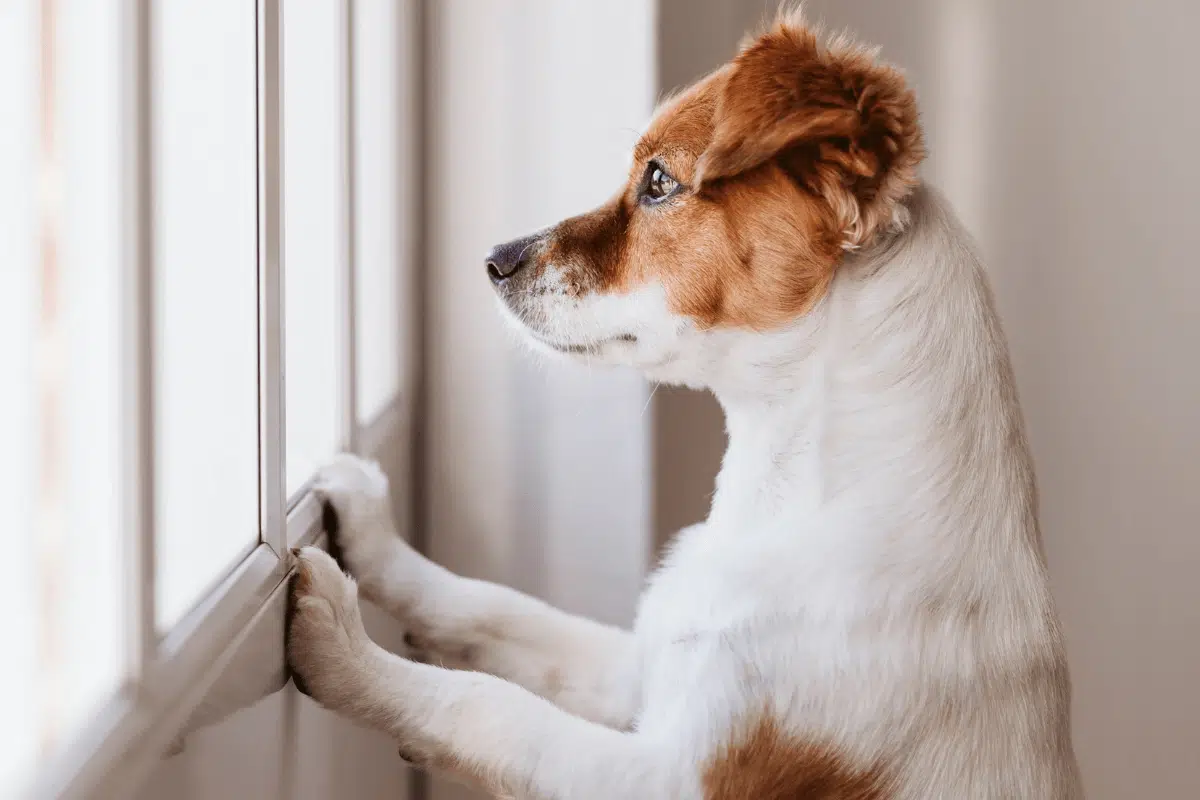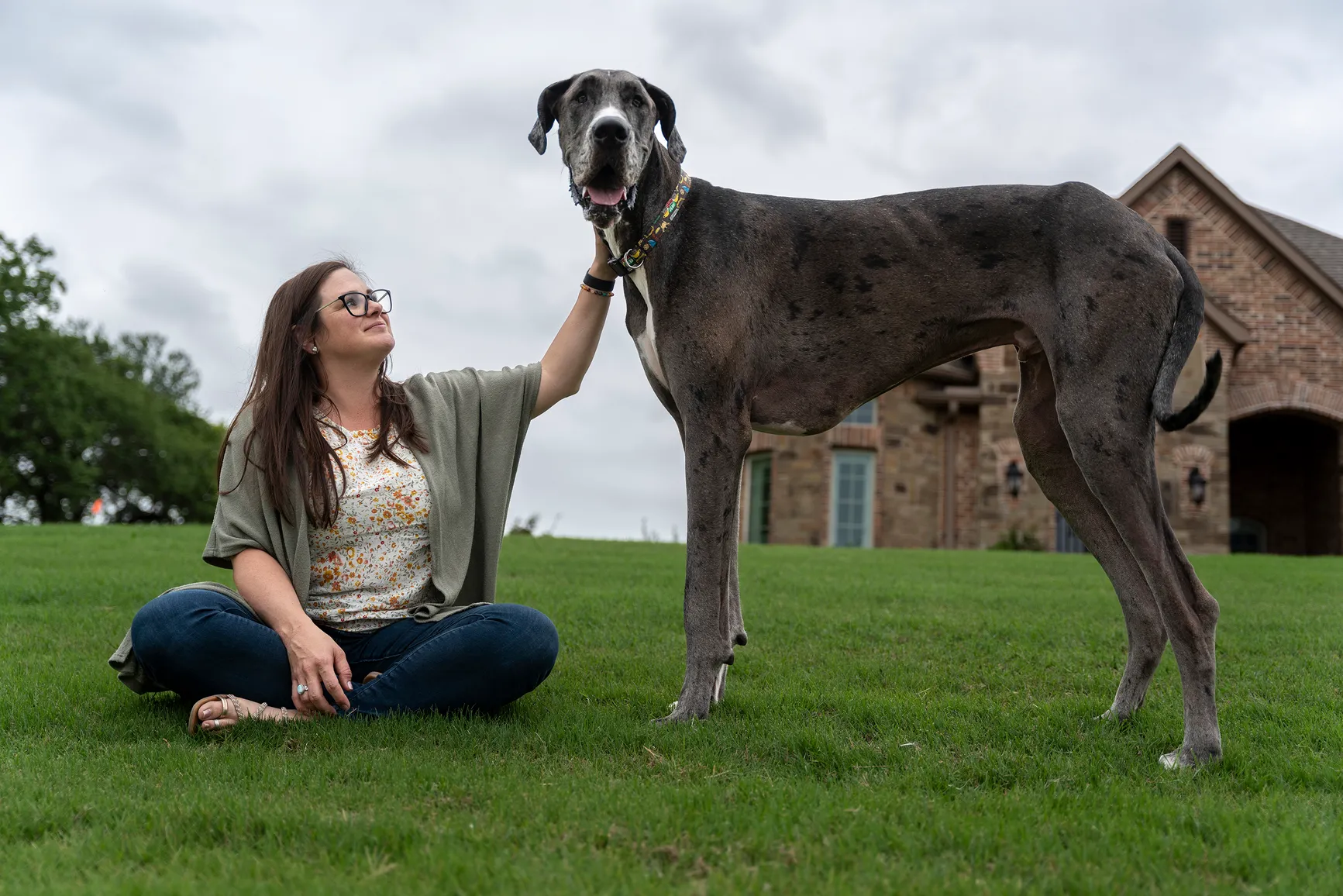Separation anxiety is a common behavioral issue among dogs that occurs when they become excessively distressed or anxious when separated from their owners or primary caregivers. This condition can manifest in various ways, from mild signs of discomfort to severe behavioral problems that can disrupt both the dog’s and the owner’s lives. Understanding the causes, symptoms, and effective treatment options for separation anxiety is crucial for helping your dog feel more secure and confident when left alone.
Understanding Separation Anxiety
Separation anxiety is a form of stress that dogs experience when they are away from their humans. It can occur in dogs of all ages, breeds, and backgrounds, but it is often more prevalent in rescue dogs or those who have experienced significant changes in their lives, such as a move, a change in family structure, or the loss of a family member. While dogs are social animals that thrive on companionship, separation anxiety can lead to destructive behaviors, excessive barking, and other issues that can be challenging for pet owners.
Common Causes of Separation Anxiety
Several factors can contribute to the development of separation anxiety in dogs:
- Genetic predisposition: Some breeds are more prone to anxiety and stress-related behaviors. Breeds known for their loyalty and attachment to their owners, such as Labrador Retrievers and Cavalier King Charles Spaniels, may be more susceptible.
- Life changes: Major changes in a dog’s routine or environment, such as moving to a new home, a new family member (human or animal), or changes in the owner’s work schedule, can trigger anxiety.
- Lack of socialization: Dogs that were not adequately socialized as puppies may struggle with being alone, leading to anxiety when their owners are not present.
- Negative past experiences: Dogs that have been abandoned, neglected, or rehomed multiple times may develop trust issues, resulting in heightened anxiety when left alone.
- Age-related issues: Puppies and older dogs may be more prone to separation anxiety due to their developmental stage or cognitive decline.
Symptoms of Separation Anxiety
Recognizing the signs of separation anxiety is crucial for early intervention. Symptoms can vary in severity and may include:
- Destructive behaviors: Chewing furniture, scratching doors, or digging at windows in an attempt to escape.
- Excessive barking or howling: Vocalizations that occur when the owner leaves and may continue until they return.
- Pacing: Dogs may exhibit repetitive behaviors, such as pacing back and forth when they sense their owner is about to leave.
- Inappropriate elimination: Urinating or defecating indoors, even if the dog is house-trained, can be a sign of distress.
- Attempts to escape: Dogs may try to break free from crates or barriers, leading to potential injury.
- Withdrawal or depression: Some dogs may become withdrawn, lose interest in food or play, or exhibit signs of depression when their owner is not around.
Diagnosing Separation Anxiety
If you suspect your dog has separation anxiety, it’s essential to consult a veterinarian or a professional dog trainer or behaviorist. They can conduct a thorough evaluation to rule out other potential causes for the behavior, such as medical issues or other behavioral problems. The veterinarian may also assess the dog’s history, symptoms, and behavior patterns to arrive at a diagnosis.
Treatment Options for Separation Anxiety
Fortunately, separation anxiety is treatable with a combination of behavioral modification techniques, environmental changes, and, in some cases, medication. Here are some effective strategies to help manage and reduce anxiety:
- Gradual desensitization: Gradually acclimate your dog to being alone by practicing short departures and returns. Start with brief absences and gradually increase the duration as your dog becomes more comfortable.
- Counter-conditioning: Change your dog’s emotional response to being alone by associating your departures with positive experiences, such as treats or toys. For example, give your dog a special treat or puzzle toy that they only receive when you leave.
- Creating a safe space: Provide a designated area for your dog that is comfortable and secure, such as a cozy crate or a room with their favorite toys and bedding. This can help them feel more secure when alone.
- Providing mental and physical stimulation: Engage your dog in regular physical exercise and mental stimulation through interactive toys, puzzle feeders, and training exercises. A tired dog is less likely to experience anxiety.
- Consider crate training: A well-trained crate can be a safe haven for dogs and can help them feel secure when left alone. Make sure to introduce the crate gradually and positively.
- Consulting a veterinarian: In severe cases, your veterinarian may recommend anti-anxiety medications to help your dog cope with their anxiety. Medication should be used as part of a comprehensive treatment plan and in conjunction with behavioral modification techniques.
- Professional help: If your dog’s anxiety is severe or does not improve with home interventions, consider enlisting the help of a professional dog trainer or animal behaviorist. They can provide personalized guidance and support to address your dog’s specific needs.
Preventing Separation Anxiety
Preventing separation anxiety can be achieved through proactive measures:
- Early socialization: Expose your dog to various experiences, people, and environments during their critical socialization period as puppies (typically between 3 and 14 weeks of age).
- Establishing a routine: Dogs thrive on routine. Establishing a consistent daily schedule for feeding, walks, and playtime can help provide stability.
- Fostering independence: Encourage your dog to spend time alone in a safe space, gradually increasing the duration as they become more comfortable.
- Training commands: Teaching your dog commands like “stay” or “place” can help them learn to be more independent and secure when you are not present.
Conclusion
Separation anxiety is a common issue that many dog owners face, but with understanding and appropriate strategies, it can be managed effectively. By recognizing the symptoms, identifying the causes, and implementing treatment options, you can help your dog feel more secure and less anxious when left alone. Remember that patience and consistency are key in addressing separation anxiety, and seeking professional help when needed can make a significant difference in your dog’s well-being. With the right approach, both you and your furry friend can enjoy a more relaxed and harmonious relationship, even when apart.






